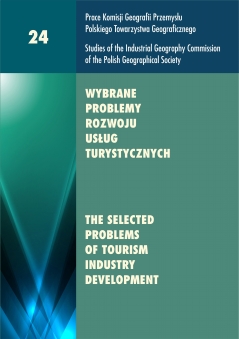Valorization of Post-mining Dumping Grounds as Geotourism Sites on the Example of the Ruhr Region
DOI:
https://doi.org/10.24917/20801653.24.7Keywords:
post mining dumping grounds, valorization and land utilization of dumping groundsAbstract
Post-mining dumping grounds are inseparably connected with the landscape of every largercity of the Ruhr Region and Upper Silesian Coal Basin. The restoration of these landforms belongs tothe most important elements of spatial planning in these areas. There are different methods of assigninga level of restoration and adapting the above mentioned landforms for functional purposes. The authorstried to evaluate dumping grounds in the Ruhr Region. In the paper, a method of valorization of dumping grounds is used, and an analysis using the conceptof valorization for dumping grounds from coal mining industry situated in Upper Silesian Coal Basinis done. This concept includes an evaluation based on two criteria: substantial value and accessibility.Twenty representative objects were analyzed according to their surface, location, land utilization andcomplexity of environmental problems.The obtained results allow rating the dumping grounds situated in the Ruhr Region highly, whichis connected with the high level of restoration. An attempt of valorization of post mining dumpinggrounds situated in the Ruhr Region using the rules of valorization elaborated in Upper Silesian CoalBasin showed that there were necessary some modifications in these rules. They were related mainly tothe way of using and location of the dumping grounds as well as general land utilization (e.g. in a touristicway). The analysis of the results of valorization shows the importance of effective restoration of thedumps, resulting from particular legal regulations. There is also one important fact that anthropogeniclandforms like post mining dumping grounds are used for didactic, recreation and landscape purposes.Downloads
References
Gawor, Ł. (2004). Wybrane zagadnienia sozologii górniczej w Zagłębiu Ruhry i Górnośląskim Zagłębiu Węglowym (GZW) na przykładzie zwałowisk pogórniczych – studium porównawcze. Zeszyty Naukowe Politechniki Śląskiej, Górnictwo, 260, 97–108.
Gawor, Ł., Main, M. (2007). Ausgewählte Umweltprobleme im Ruhrgebiet und im Oberschlesischen Kohlenbezirk (GZW) am Beispiel von Bergehalden. In: Veröffentlichungen von der 16. Tagung für Ingenieurgeologie und vom Forum Junge Ingenieurgeologen, Bochum, 07. bis 10. März 2007, Hsg. Otto F., 95–103.
Gawor, Ł., Szmatłoch, A. (2010). Koncepcja waloryzacji zwałowisk po górnictwie węgla kamiennego na przykładzie Górnośląskiego Zagłębia Węglowego. Acta Geographica Silesiana, 7, 23–30.
Held, T., Schmitt, T. (2001). Vom Spitzkegel zur Landmarke. Geographische Rundschau, H.9, Band 53, 19–26.
Labus, K. (2005). Parametryczna metoda oceny oddziaływania form turystyki na obiekty przyrody nieożywionej. Zeszyty Naukowe Politechniki Śląskiej, Górnictwo, 269.
Schulz, D. (2004). Recultivation of Mining Waste Dumps in the Ruhr Area, Germany. W: Water, Air & Soil Pollution, Springer Netherlands, 89–98.
Wiggering, H., Kerth, M., (1991). Bergehalden des Steinkohlenbergbaus. Braunschweig/Wiesbaden: Verlag Friedr. Vieweg & Sohn Verlagsgesellschaft mbH.
Downloads
Published
How to Cite
Issue
Section
License
Articles are published under the terms of the Creative Commons License (CC BY-ND 4.0; Attribution– NoDerivs).

